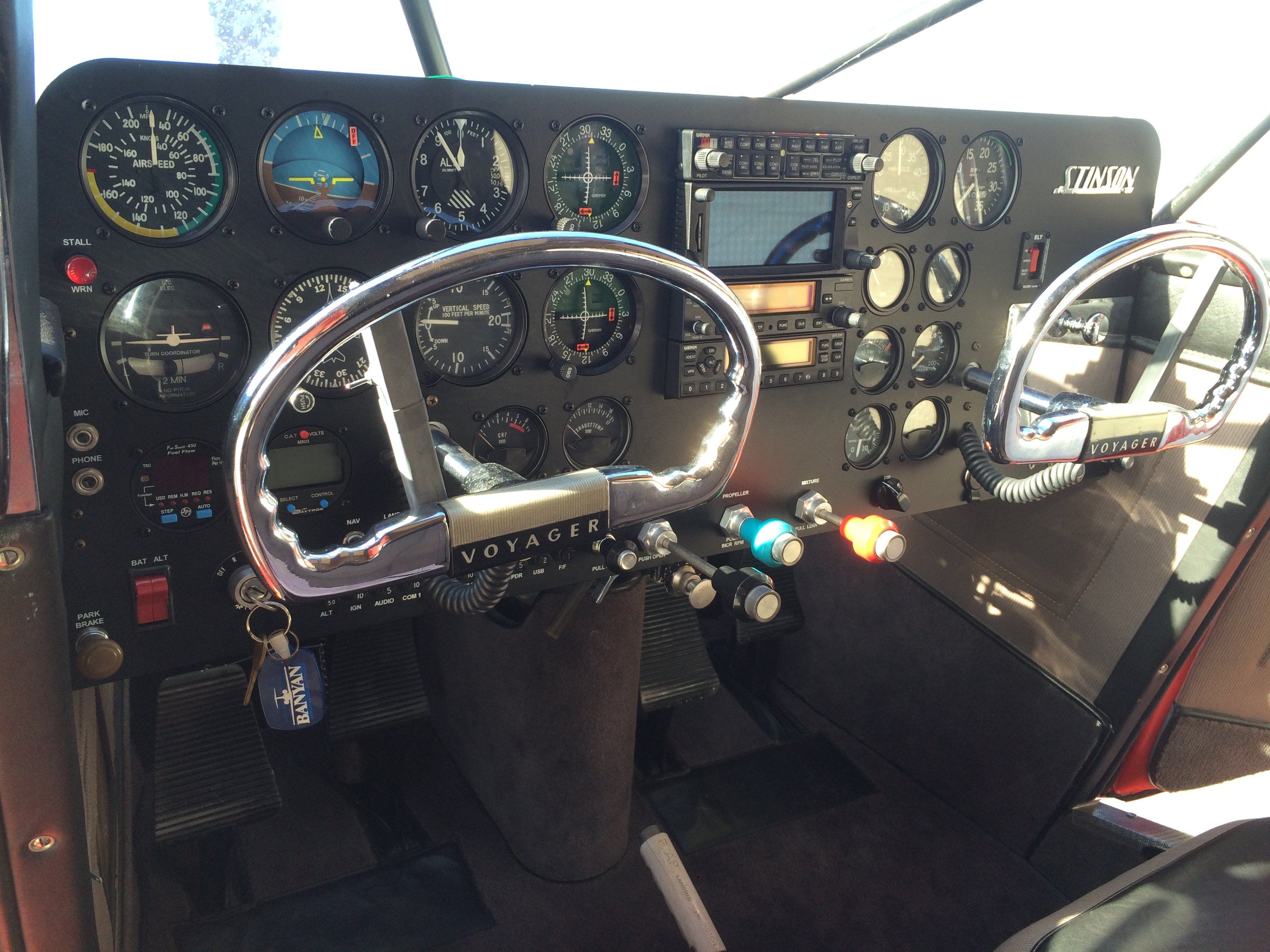A couple of blogs ago, we examined avionics for old guys, but what about avionics for old airplanes? As the fleet ages along with the pilots who own it, a not-that-old airplane these days is one built in the early 1980s. As an inveterate observer of panels, I always peer inside the windows of airplanes to see what the owner has done with avionics upgrades. In a way, it’s a peek into pilot’s view of flying and perhaps a core bore into the thickness of his wallet.
Starting from the universal truth that owning an airplane is an irrational act, some people really tart up their panels beyond any reason. I saw an early 1970s Skyhawk fitted out with glass and a pair of digital mapcomms. Whaaat? Clearly the owner liked the airplane, had money to burn and wanted glass in his airplane and the rest of the world—including me—can go pound sand.
I’ve also seen some panels in which the owner spent reasonably if not lavishly and yielded an upgrade that suited the age and purpose of the airplane just right, functionally and aesthetically. I snapped this picture of one of those a few months ago. It’s an old Stinson 108, circa 1948. It’s been carefully restored, but not into an Oshkosh show piece. What impressed me with the panel is that it was cutting-edge modern, but not over the top either. The center stack had a Garmin GTN 650, a GTR 225 comm—or maybe the GNC navcomm, not sure on that—and a transponder and audio panel. The original steam gauges remained and there were no other bits of glass and flashing digital displays to lard the thing up with the unnecessary. Now it’s probably true that in an airplane that old and rare, approvals for all avionics might not exist, but it’s also true owners with more money than restraint can usually find a way.

But in that airplane—retail value probably in the mid-$30,000 range—that’s a lot of modern capability to do about anything you’d want to do with the airplane, including serious IFR and night cross country flying at a stately 110 knots for 3.5 hours or thereabouts. For an old taildragger with four seats, I’d take that in a heartbeat. So what would such an upgrade cost? Here it gets interesting. The shop that did it, Sarasota Avionics here in Venice, figured it at around $30,000. Basically the value of the airplane, to include a new flat metal panel and complete rewiring.
Does this make a lick of sense? See above concerning irrational acts. It only makes sense if the owner loves the airplane and plans to be buried in it, which, as it turns out, many owners do. If you can write the check and it makes you happy, why not? But you’ll flush most of it away at resale, so don’t even think about “investment” value.
As far as the overall cost/value, it’s not that different from what we spent on our Mooney 201 15 years ago. I recall we installed a reconditioned GNS 530, a transponder and a second navcomm with glideslope, plus major rewiring, and the invoice came to north of $20,000 for similar functional capability as the Stinson has. But the newer avionics have better displays and the digital navcomm has more sophisticated features. Although this equipment might not add meaningful capability, it is better, in my view. I wouldn’t want to go back to a panel like the one we installed in 2000 if I’d tasted something newer.
If I run the Mooney’s invoice total through a CPI calculator, it totals right around $30,000 in 2015 dollars. So although we hear far more complaints about the escalating cost of aircraft upgrades and maintenance, in this one case, the upgrade cost was in line with inflation. At the time, it represented about a third of the value of the airplane. So why then do we hear so many complaints?
For several reasons, I think. One is that the value of older airframes is declining because sales are down and there are fewer buyers. Another is that no matter how sophisticated and knowledgeable about electronics and certification you are, you can’t help but draw price/value signals from both consumer electronics and experimental avionics. In 2000, Dynon was just starting and so were a number of other experimental-only avionics companies. Buyers of certified aircraft fume that they can’t install this equipment in their airplanes. I don’t blame them. Last, demographics. As owners age right along with their airplanes, they’re confronting both impending mortality and the reality that the arc of their income is either flat or on the decline. Thirty grand ain’t what it used to be. Add to that the mandate to install ADS-B and you have the perfect storm of customers spending money and feeling like they’re getting stuffed. Looking toward the horizon, I don’t see much that will change that, unless the revision of Part 23 really allows the installation of non-certified equipment on a substantial scale, something we would all like to see.
Drone Registration
We were informed over the weekend that the FAA will actually unveil its drone registration plan today. Although the drones flying off the store shelves were shipped months ago, the agency is getting in just under the Christmas deadline. Sort of.
I can hardly wait to learn of the details.


































